Growing vegetables in greenhouse conditions is a very common practice today, because in our climate it is quite difficult to grow a good crop in the open ground. Thanks to selective work on the seed market, every year more and more varieties of cucumbers appear, which differ not only in shape and number of fruits, but also in resistance to diseases and growing conditions, ripening time and fruiting duration.
When choosing the seeds of the earliest and most fruitful cucumbers, you should decide for what purpose the vegetables will be intended, whether the selected variety is suitable for greenhouses and how long the fruiting period should last. Today there is a huge selection of varieties for greenhouses, which are not inferior in quality and taste to cucumbers grown on beds.
Content
Characteristics of the earliest greenhouse varieties of cucumbers
There are a large number of greenhouse varieties of early cucumbers, which can be either simple or hybrid. Vegetable growers emit self-pollinated plants, as they are ideal for growing in a greenhouse. Among them, the following early varieties are most often acquired:
- April F1 is a self-pollinating hybrid, which is characterized by good cold resistance. Fruiting occurs on 45-55 days. The hybrid is grown indoors and even in apartment conditions. Cylindrical cucumbers are covered with large tubercles. The length of the fetus is 20-25 cm, weight - about 200 g.
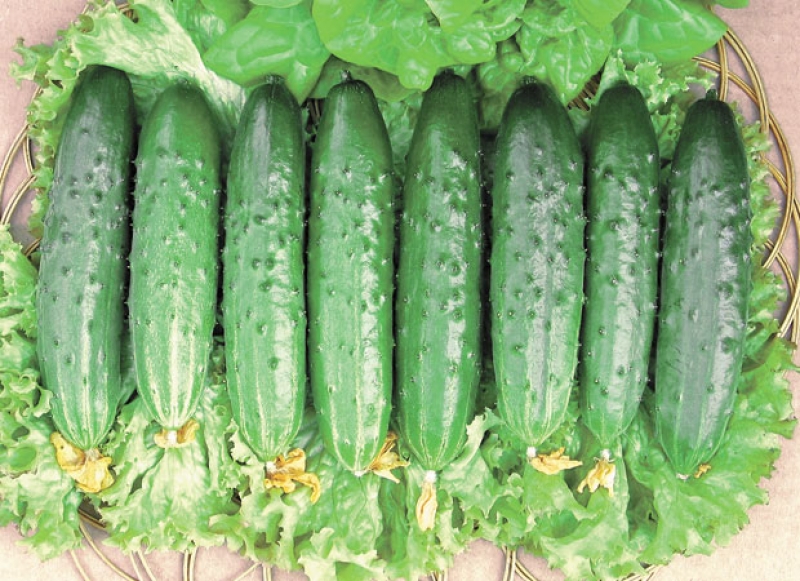
April F1 - Masha F1 is a relatively new variety that breeders characterize as the earliest. Medium-sized fruits are used for salting, canning and consumed fresh. Subject to the rules of care, the fruits ripen on the 36th day after emergence.
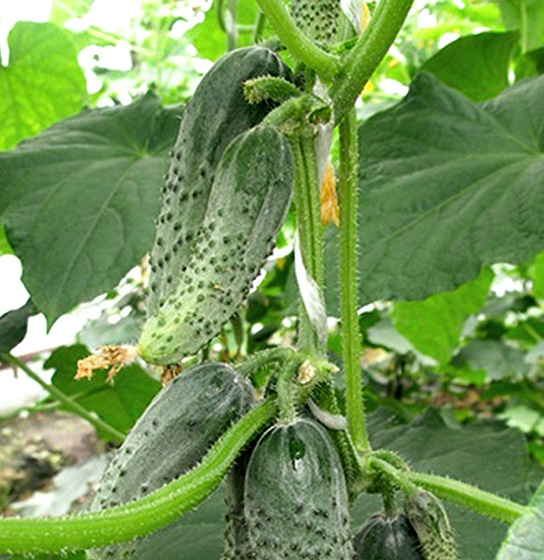
Masha F1 - Muromsky 36 is one of the earliest varieties. The first crop can be obtained already on 32-45 days. This variety is suitable only for those vegetable growers who are able to harvest daily, as the ripened fruits turn yellow quickly.
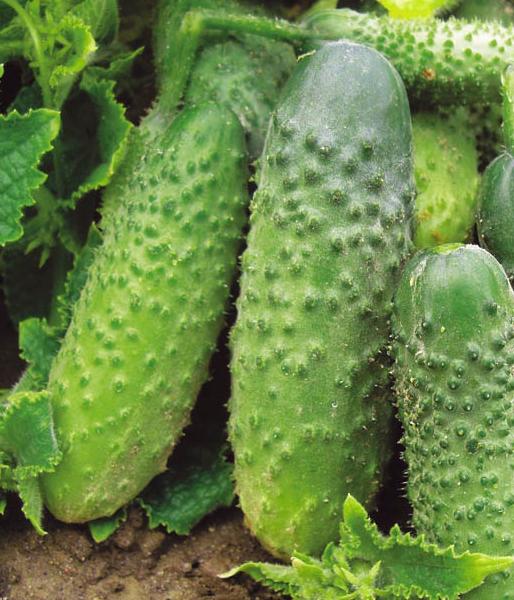
Muromsky 36
Early varieties are not as resistant to diseases as medium and late ripening. The fruiting period is relatively short, but there are also advantages. For residents of the northern regions, early species are simply irreplaceable, because a short summer does not allow the cultivation of late cucumbers.
The most productive varieties of cucumbers for greenhouses
For indoor culture, parthenocarpic and self-pollinated species should be acquired. Hybrids marked “F1” are perfectly adapted for such conditions.
Parthenocarpic varieties
Since it is too troublesome to grow varieties pollinated by bees in greenhouses, vegetable growers prefer to grow parthenocarpic varieties that bear fruit without pollination. The most common varieties include:
- Cheetah F1 - resistant to bacteriosis and powdery mildew. Zelentsy have an attractive shape and great taste. Cucumber grows about 11 cm in length and reaches 80-100 g.
- Orpheus F1 is a representative of self-pollinating plants. Its fruits are covered with light, almost imperceptible stripes. Cucumber grows to 12 cm. The taste of the vegetable is pleasant and has absolutely no bitter aftertaste.
- Glafira F1 - different spindle-shaped fruits that grow up to 20 cm in length. The weight of one vegetable can be 160 g. The hybrid is shade-tolerant, therefore it gives a good harvest on cloudy days.
Other F1 cucumbers are also very popular: Emerald, Blik, Amur, Mazay, Romance.
Hybrids for indoor use
When growing crops in greenhouses, it is best to select seeds of hybrid plants that are created for indoor cultivation. The early-ripe hybrid Murashka F1 is represented by a medium-sized plant of the beam type with high productivity. Fruits reach 12 cm in length, and their surface is covered with large tubercles with black spikes. This hybrid is universal, because its taste remains even after salting and canning.
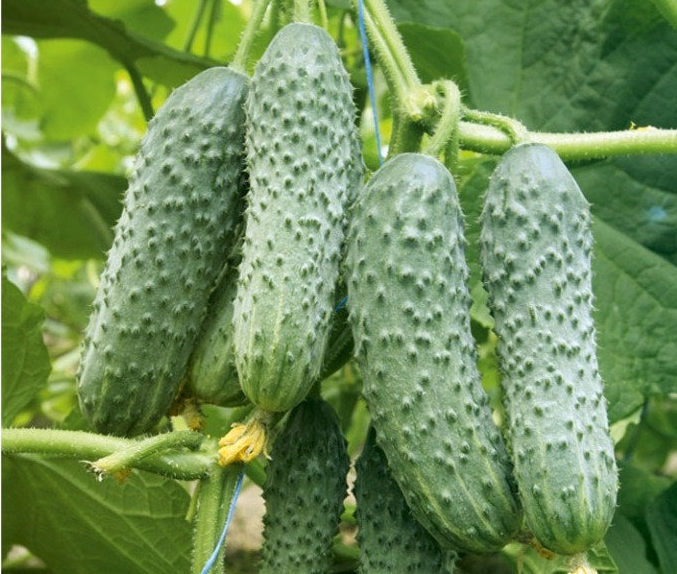
Hybrid F1 Alekseich forms Zelentsy 7-8 cm long. The early ripe variety is resistant to downy and powdery mildew. On its shoots of medium size, slightly tuberous cucumbers of universal application grow.
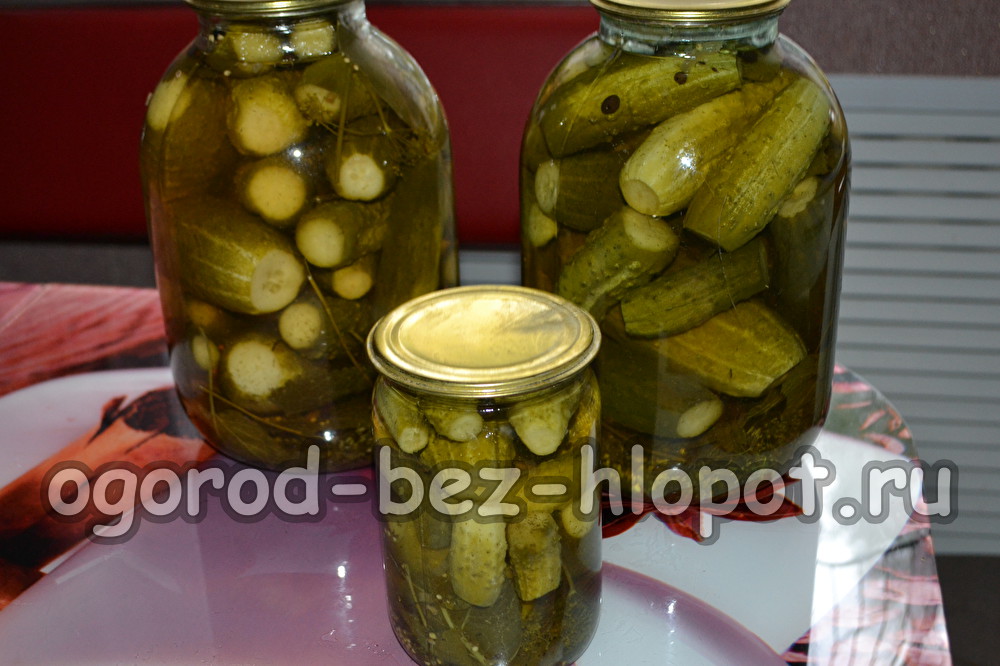 You may be interested in:
You may be interested in:The best varieties for canning
For pickling vegetables, it is best to choose varieties with thin skin so that the cucumber can be well fed with brine. Experts advise sowing seeds of the following varieties:
- Finger;
- Cascade;
- Vanguard
- Fontanel;
- Brigantine.
For canning and pickling, you should choose small fruits, since they are better amenable to heat treatment than large specimens. Varieties suitable for universal use:
- Minion;
- Sunrise;
- Annushka
- Trump card;
- Northerner.
Imported and exotic varieties
Vegetable growers emit Chinese cucumbers, the size of which varies between 30-80 cm. Their dense flesh with small seeds is covered with a thick peel, they are unpretentious to lighting and give a good harvest. Among the varieties, the most common are the following varieties:
- Chinese snakes are a super-early hybrid salad salad, grown only indoors. Curved fruits reach no more than 60 cm in length;
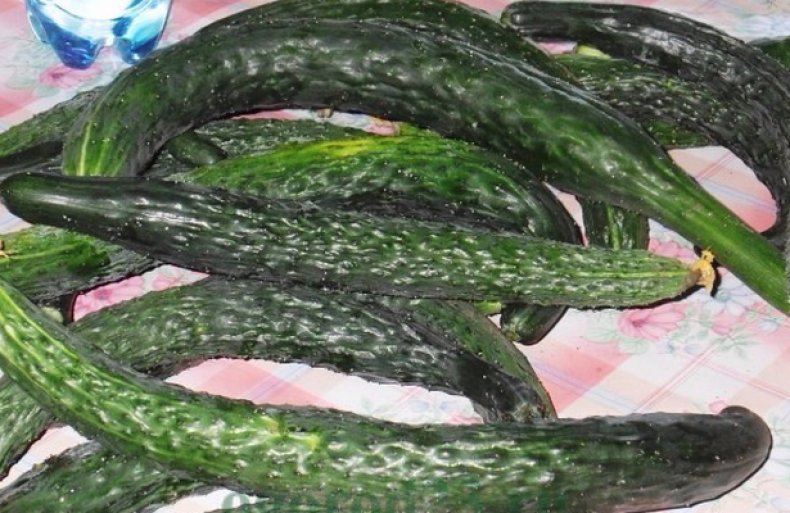
Chinese snakes - Chinese heat-resistant is a mid-season variety that grows well in hot climates. Cucumber grows about 40 cm long.
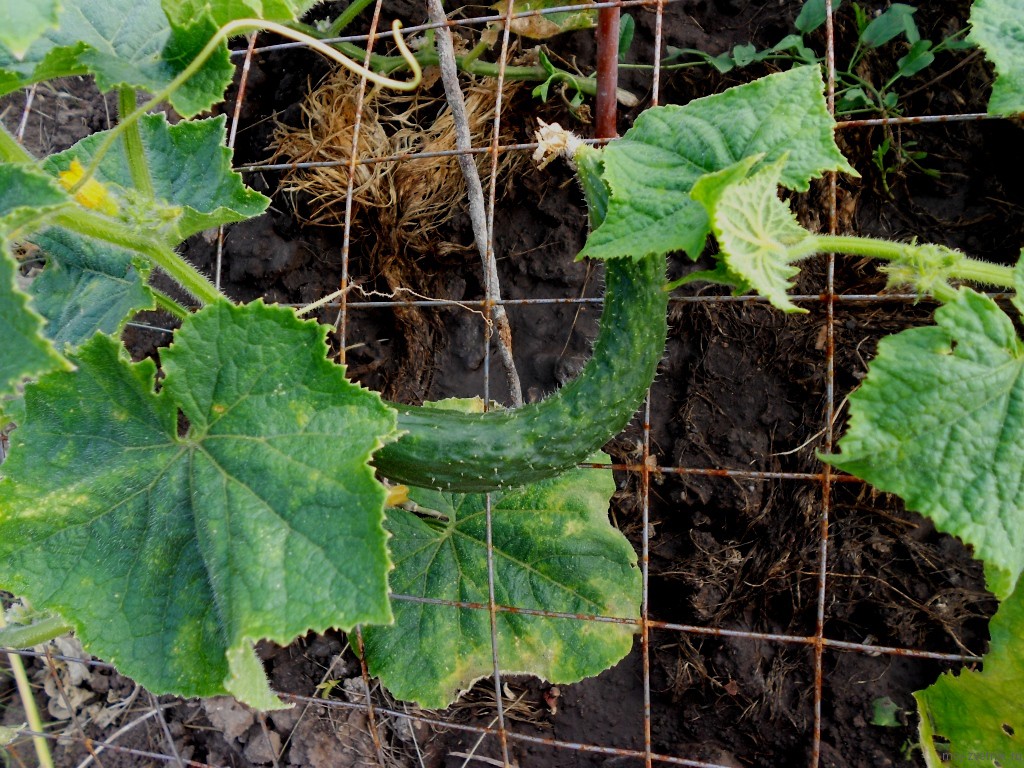
Chinese heat resistant
Dutch varieties also enjoyed considerable success among vegetable growers: Dolomite, Temp, Angelina, Ekol.
Armenian cucumbers are considered exotic plants, because their aroma resembles a melon, and outwardly the fruits are similar to zucchini. Exotic lovers can grow a "lemon". The vegetable is very similar to fruit: it has a rounded shape and a yellowish color.
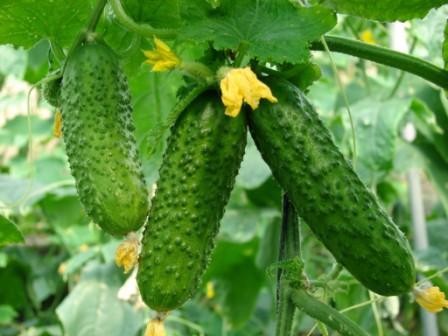 You may be interested in:
You may be interested in:When to sow cucumbers for seedlings for an early harvest?
In order to get an early harvest, you should take care of the timely sowing of seeds. Before sowing cucumbers for seedlings, the beginning vegetable grower should study the features and technology of this process.
General rules
Cucumbers, like most representatives of the Pumpkin family, tolerate transplants very poorly, so seedlings are grown in containers that exclude picking. As containers, you can use plastic cups or other disposable containers, the volume of which should be at least 400 ml, and a height of 12 cm or more. Some gardeners practice sowing seeds in a peat tablet.
Sowing seeds
Dry seeds sprout longer, so it is advisable to soak them in water. When sowing, it is important to adhere to the following recommendations:
- the bottom of the tank must have drainage holes;
- the container is filled with soil mixture not to the very top, but about 1 cm is left for watering;
- the soil should consist of 2 parts of chernozem, 1 part of peat and a small amount of sand;
- in one glass, dip the hatching seed to a depth of not more than 2 cm.
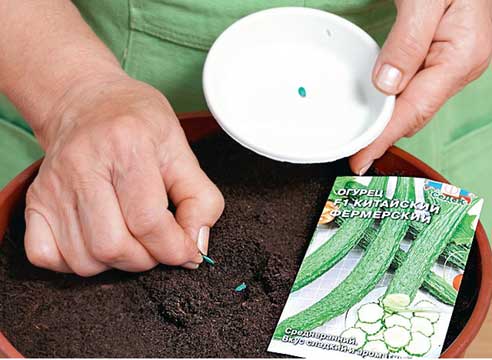
The containers are transferred to a warm room with a temperature within + 24 ° C and watered twice a week.
Landing time
You can plant seeds from late March to mid-May. The landing period depends on certain conditions:
- climate;
- place of cultivation (greenhouse or greenhouse);
- ripening time of the first crop.
For example, in the Moscow Region, early varieties for greenhouse cultivation should be sown in late May. And in the regions of Siberia, the same varieties are sown in the second week of April, and in the southern part of the country the procedure is carried out in February.
Basic care
After the germination of the first sprouts, the cups are moved to a bright place, which should be protected from drafts. Some vegetable growers use fluorescent lamps to accelerate growth. They are placed at a height of about 5 cm from the seedlings. As it grows, the light source is periodically raised upward.
It is best to put seedlings in a room with diffused light. The first feeding of cucumbers can be carried out 2-3 weeks after germination, and the second after the formation of the second true leaf.
Pest and Disease Control
Greenhouse conditions are comfortable not only for cucumbers, but also for pests. The most common in greenhouses are whitefly and melon aphids. When whiteflies appear, plants should be sprayed more often, especially the inside of the leaves. After this procedure, the soil is loosened and sand or sawdust is added. For prevention, close the windows and the greenhouse with gauze.
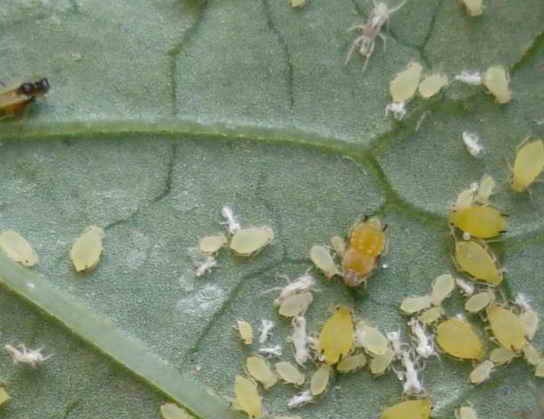
Overmoistening of the soil and increased humidity can cause powdery mildew, white and gray rot of the fruit. The diseased parts of the plant are cut out, and the places of the sections are sprinkled with lime. When powdery mildew appears, you can use mullein infusion or a special fungicide. To prevent diseases during planting seedlings, potassium permanganate is added to the soil.
Possible problems when growing early greenhouse cucumbers
When growing early greenhouse varieties, it often happens that the plant withers leaves, spots or plaque appear on the leaf plate. Most often, beginners are faced with the problem of drying leaves. Experienced vegetable growers identify several reasons for this phenomenon:
- sudden changes in temperature;
- poor watering;
- improper fertilizer application;
- planting next to tomatoes that prefer dry air;
- thickened landing;
- the development of the disease.
By foliage, you can determine what the culture lacks:
- leaves twisted up indicate a lack of phosphorus;
- a brown border appears on the edges of the foliage - you need to make potash fertilizers or feed with ash;
- the formation of small and bright leaves indicates a lack of nitrogen;
- green foliage with a yellow tint - lack of trace elements (can be fed with universal micronutrient fertilizer).
Sometimes it happens that parthenocarpic varieties form an irregular shape of vegetables: they grow ugly or hook-shaped. This happens when parthenocarpic plants pollinate bees.
Common questions
Beginning vegetable growers, in order not to get confused in the variety of varieties of cucumbers, it is necessary to decide for what purposes the crop will be grown: for pickling or salads, long or early fruiting. In this case, making the right choice will be much easier, and the end result will not disappoint.




 Armenian cucumber with melon flavor: description and characteristics, reviews
Armenian cucumber with melon flavor: description and characteristics, reviews Do-it-yourself vertical beds for cucumbers: schemes, photos
Do-it-yourself vertical beds for cucumbers: schemes, photos Hollow cucumbers: reasons for the appearance of hollow, what to do
Hollow cucumbers: reasons for the appearance of hollow, what to do Which manure is best for cucumbers: application, how to breed
Which manure is best for cucumbers: application, how to breed